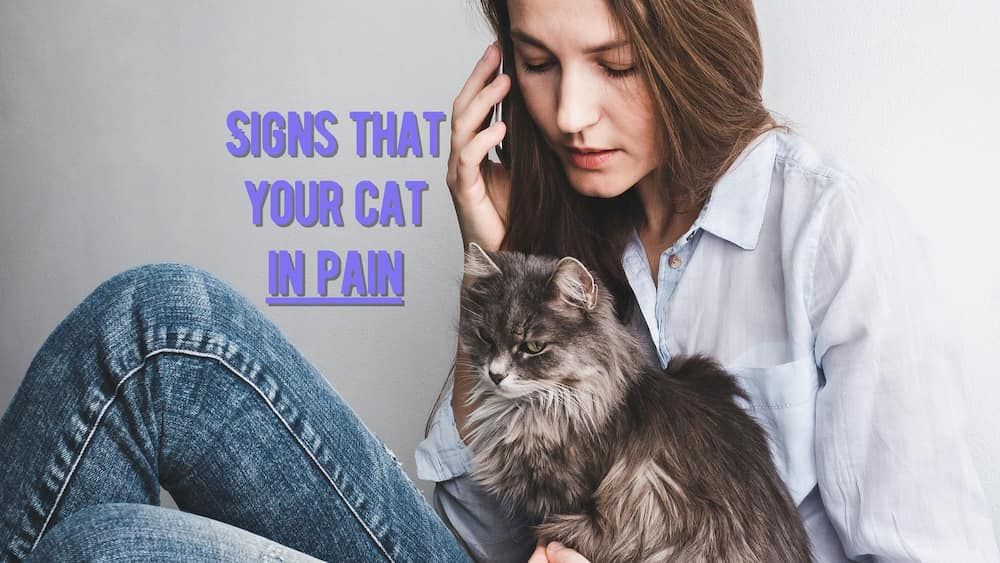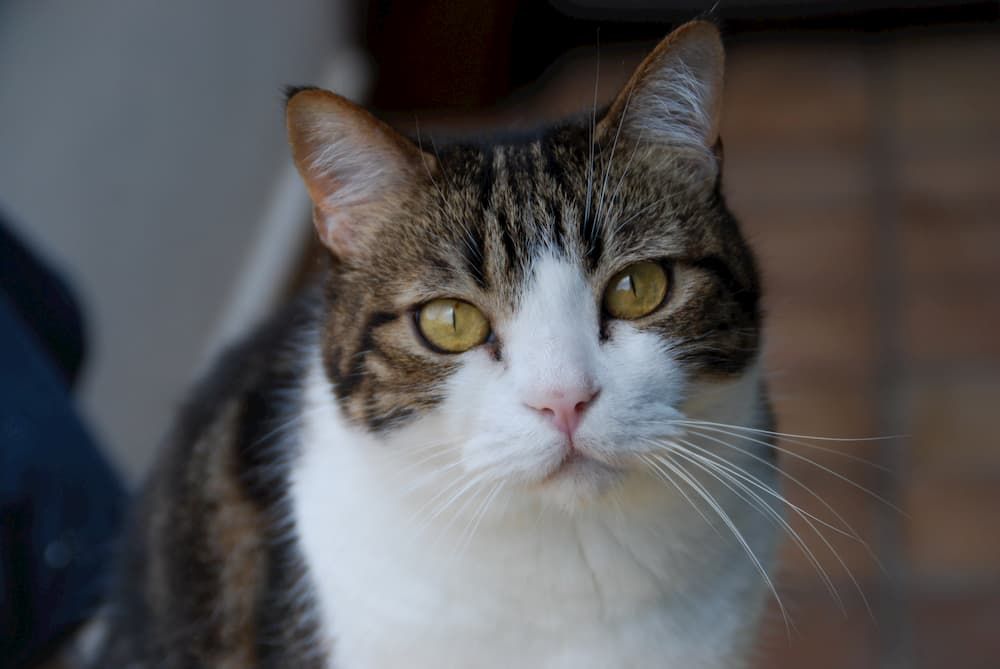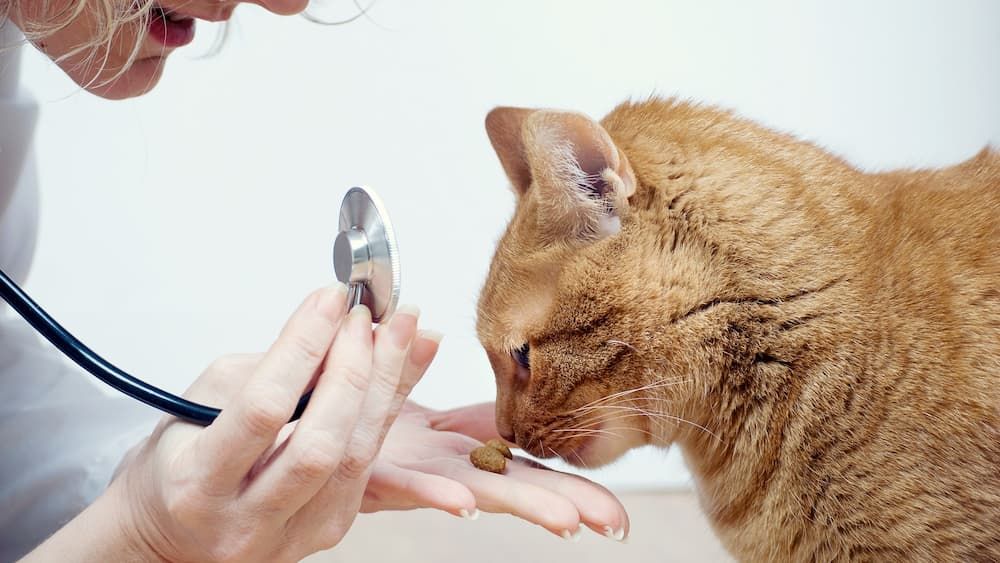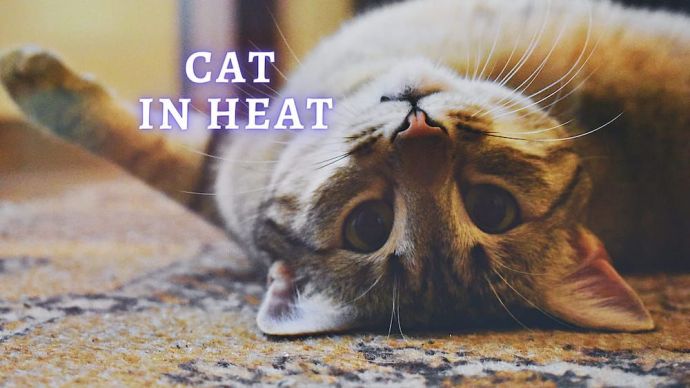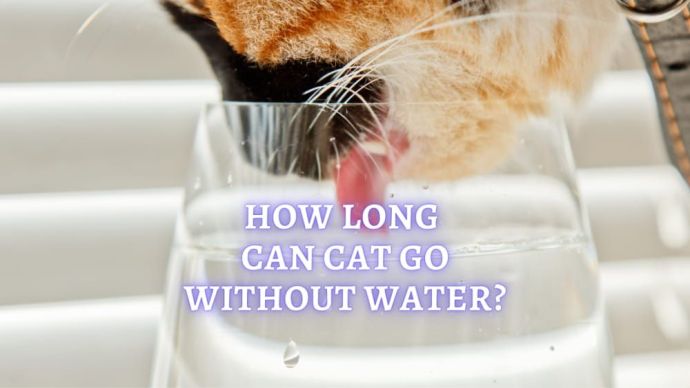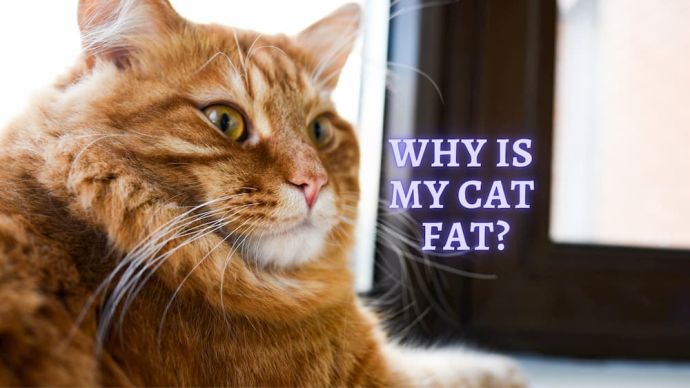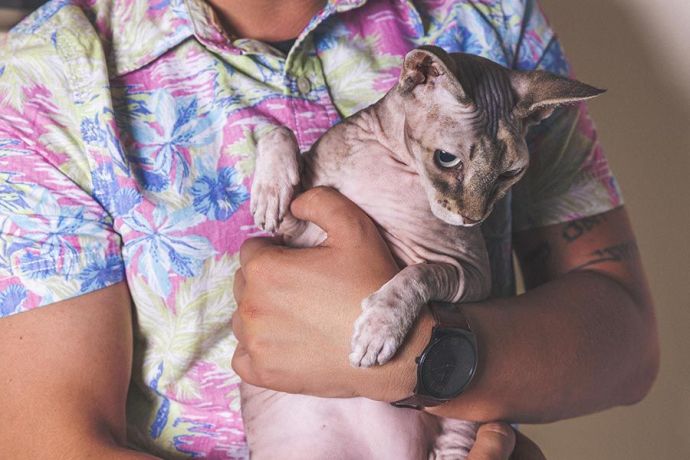How to tell if a Cat is in Pain? (Veterinary Advice)
Written by:
Author: Dr. Kathryn Dench
Dr. Kathryn Dench is an experience veterinary with over 10 years' experience in small animal and exotic pet medicine. Kate qualified from Cambridge University Veterinary School in 2007. Kate has worked in a number of veterinary practices in the UK. She has extensive experience in the medical care of pet species, from dogs and cats to chickens and chameleons! In free time, Kate writes pet advice in order to ensure that owners are receiving the best possible information on how to care for their pets.
View all 9 articlesLearn about our editorial process and veterinary review board.
Viewed: 262
Updated on: 03/31/2022
As responsible pet owners, we want to keep our cats free of any unnecessary pain and suffering. But research shows that signs of discomfort in cats are among the most misunderstood and hard to read. In this article we look at this important topic in more detail.
What are the Signs of Pain in Cats?
As anyone who’s ever heard cats fighting can tell you, pets can certainly let out a loud wail when something hurts! But unlike other species that use crying to communicate that they are in ongoing pain, cats rarely do this vocally. So how can you tell if your pet is in pain?
The symptoms your pet expresses when they are in pain can be quite variable, depending on what is causing the pain and also on your cat’s individual temperament. Here are some of the more common signs you might see.
1. Quiet and still
A cat who is in discomfort will often become quite withdrawn. They might hide away, and are usually not interested in playing or eating. You may notice your pet looks quite lethargic and tired, or they may be very still but tense or hunched. Being quiet and “not themselves” may not seem like much of a symptom, but it is very common in cats that are unwell or in discomfort.
2. Aggression and sensitivity
Painful pets may be more aggressive and sensitive than normal. They may growl at you if you go near them, and if you touch them you may find they groan or even lash out at you. They may be sensitive even if the part of the body you touch isn’t the part that’s in discomfort.
3. Breathing fast
Animals who are in pain often have a faster breathing rate than a comfortable animal. This is something your veterinarian would check on your cat, but respiratory rate is not easy to interpret in the veterinary clinic because the stress of travel and being in the clinic can cause anxiety that also makes your cat breathe faster. It can be useful if you watch your pet from a distance while they are resting at home and count the number of breaths they are taking over the course of one minute: a relaxed comfortable pet should have a respiratory rate between 20 and 30 breaths per minute.
4. Specific symptoms related to the site of pain
Depending on what is causing discomfort in your pet, you may notice some specific symptoms. Joint pain or pain in one of the limbs can cause a visible lameness or limping. The signs can also be more subtle like not wanting to jump up onto surfaces like normal. Cats with mouth discomfort might show an interest in the food bowl, but back away when it comes to actually eating because they are too sore. A cat straining in the litter tray or crying when passing urine might have bladder pain.
5. Chronic pain signs
In some conditions, pain comes on in a very gradual way and the symptoms associated with it are also more subtle. General changes in mood and temperament can be an indication that your pet is uncomfortable or in pain. They may not interact with people in the way they used to. Another common sign is a scruffy coat in a cat that used to keep themselves tidy, but are now no longer grooming themselves.
What should I do if my Cat is in Pain?
The first thing to do if you think your pet is in discomfort is to help them stay safe and calm. If your cat is hiding away, try not to disturb them. Keep other animals and children away from them, so they have a safe space to relax. It is usually best to try to keep them indoors with easy access to water, food and a litter tray.
The second step is to contact your veterinary clinic. Your veterinary team may be able to give you some immediate advice over the phone and should be able to help you decide whether your pet needs to be seen at the clinic.
A veterinary examination will help establish whether your pet is in pain, what the possible causes might be, and start treatment to relieve the discomfort and address the cause. Veterinarians are trained to assess pain in all species, even those that try to mask their pain. Subtle changes in body posture in how your cat is sitting can give clues about parts of the body that your pet is trying to protect. Tension in muscles that would normally be relaxed, such as the muscles around the abdomen, can also give your vet a strong indication of whether your pet is in discomfort.
From research first presented in 2019,[1] a set of guidelines has been developed to help veterinarians interpret the facial expressions of cats experiencing pain. This is known as the grimace scale. By evaluating the way your pet is holding their ears and whiskers, as well as the shape of their eyes, the scale provides a way of grading a cat’s discomfort. This is also useful for your veterinarian to check that painkillers are being effective in reducing pain in our feline patients.
From their examination, your vet will be able to ascertain whether your pet seems to be in pain, and discuss with you the likely causes and a plan of action for how to determine exactly what is going on. There are a number of different conditions that can be painful in cats, and your vet may recommend some tests or investigations to pinpoint the problem.
Some short-term conditions that can cause pain in cats include:
- Cystitis or blocked bladder
- Post-operative
- Broken bones
- Fighting injuries
While some more chronic causes of pain are:
- Osteoarthritis
- Kidney disease and other organ conditions
- Cancer
- Tooth and gum disease
It is also possible that the symptoms you have noticed are not actually related to pain, but have another underlying medical explanation. For example, you might think that your cat is in pain when you see them walking in a strange way, but the results of the examination and investigations may show that they actually have a neurological problem causing the change in their walking.
Whatever the cause, if your pet is in pain then your vet will recommend pain relief. There are a range of different medications that can be given to your cat to help relieve discomfort, and your vet will decide the best pain relief strategy to get your pet feeling comfortable as quickly as possible.
How do I know if my elderly Cat is suffering?
There are a number of chronic conditions that can affect older cats, many of which can cause our feline friends to be in pain. The signs of pain may be very subtle and develop gradually, which makes it hard to pinpoint exactly when they started. The symptoms in your pet may also be difficult to distinguish from the general signs of “slowing down” that are expected in older animals.
READ MORE: Signs your Cat is Getting Old
If you are concerned that your pet might be in discomfort, the best recommendation is to discuss your worries with your veterinarian. Your vet will be able to make an objective assessment and discuss a plan with you. They can also check whether there is an underlying medical condition making your cat uncomfortable. It is possible that by treating the condition or providing pain medication, your cat’s pain can be relieved.
But if your cat is showing signs of pain that are not responding to treatment, the difficult question arises as to how their quality of life is being affected. For pets that are no longer able to do the day-to-day activities that they previously enjoyed and are suffering from discomfort that we are unable to relieve, euthanasia can be a heartbreaking but compassionate decision. Your veterinary team will be able to support you and guide you if you feel this time may be coming.
Frequently Asked Questions
😺 Do Cats meow if they are in pain?
Some cats will yowl when they are in pain, but the vast majority are quiet. When we think of small prey species, like rabbits and rodents, we can understand the evolutionary advantage in hiding signs of pain or injury: the last thing you need is a predator hearing you crying and coming to pick you out from the group. While many predator species express pain more vocally than their prey counterparts, cats are in fact often quite quiet when they are in pain. It is thought that this is because they are relatively small and can be prey for larger animals.
🐈 What can you give a Cat for pain?
There are a number of very effective pain relief medications licensed for use in cats. Your veterinarian will be able to recommend the treatment they feel is most appropriate for your cat’s current condition. Some of these medicines are in the form of injections, but there are also tablets and syrups that can be administered at home.
It is really important that you NEVER give human pain relief medications to your cat, as they cannot process them and it can cause fatal liver damage. Even if you have feline medications in your home, always cross-check with your veterinarian before giving them to your cat, and never go above the recommended dose.
Conclusion
Recognizing pain symptoms in cats is tricky, but paying close attention to subtle changes in your cat’s behavior and routine can help you pick up on clues that your feline friend is in discomfort. The sooner you discuss your concerns with your vet, the faster your cat can be assessed and, if necessary, treated, so you can be confident you are doing everything possible to keep them happy and comfortable.
Article Sources:
- The Grimace Scale for assessing pain in cats: https://www.avma.org/javma-news/2019-10-01/new-scale-interprets-pain-feline-facial-expressions
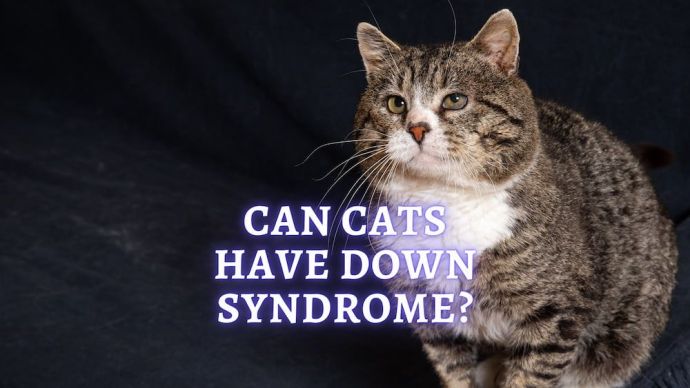 Cat Veterinary Tips Down Syndrome Cat: Can Cats Have Down Syndrome? (Vet Advice)
Cat Veterinary Tips Down Syndrome Cat: Can Cats Have Down Syndrome? (Vet Advice) - 1359
- 0
 Cat Veterinary Tips Cat Chewing Cardboard: Why Does My Cat Chew On Cardboard? Vet Advice
Cat Veterinary Tips Cat Chewing Cardboard: Why Does My Cat Chew On Cardboard? Vet Advice - 4382
- 0
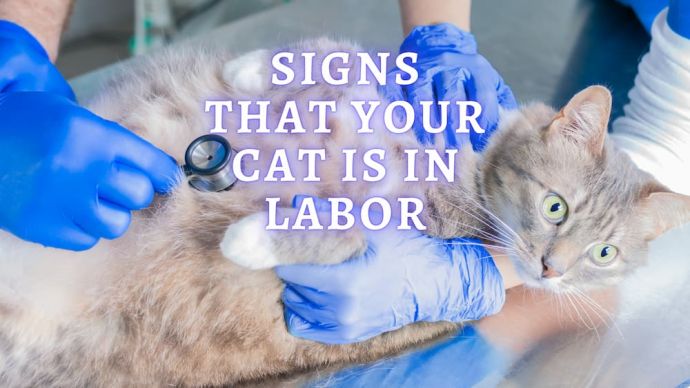 Cat Veterinary Tips Signs That Your Cat is in Labor: How to tell if a Cat is Pregnant?
Cat Veterinary Tips Signs That Your Cat is in Labor: How to tell if a Cat is Pregnant? - 15122
- 1
 Cat Care Why Does My Cat Attack My Legs? 10 Reasons Why and What To Do About It (Vet-Approved Advice)
Cat Care Why Does My Cat Attack My Legs? 10 Reasons Why and What To Do About It (Vet-Approved Advice) - 46013
- 21
 Cat Veterinary Tips Cat Stomach Gurgling: Vet Advice on Why is Your Cat Stomach Gurgling?
Cat Veterinary Tips Cat Stomach Gurgling: Vet Advice on Why is Your Cat Stomach Gurgling? - 36469
- 4
 Cat Veterinary Tips My Cat Lost its Voice: Can Cats get Laryngitis? (Vet Advice)
Cat Veterinary Tips My Cat Lost its Voice: Can Cats get Laryngitis? (Vet Advice) - 23554
- 13









